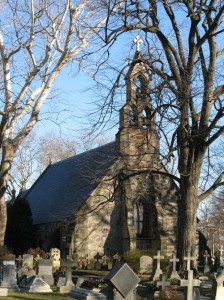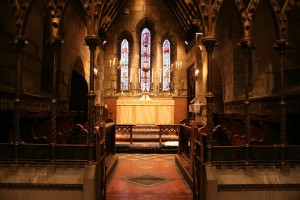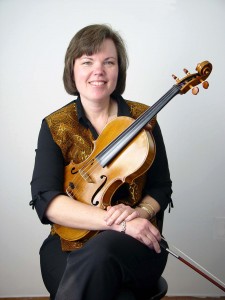As I sit in my comfy rocker in the nursery with our seven-week-old Andreas, I have alot of time to think about what I would like for him in his life. Of course, we all want our children to be happy and to have their needs not only met, but for them to flourish in every way. I am no different. I think that more than anything, I want for Andreas to find something in his life – or many things in his life, but at least one thing – that feeds his spirit and nurtures his soul. I want him to feel not just happy (which is a feeling that can come and go), but an underlying, enduring joy that doesn’t depend on the circumstances of the moment. I wish for his life to be one that is filled with meaningful relationships and for him to have a feeling of integration into the world around him. I want for him to have the sense that he can contribute something special, and to have something that fuels his imagination and energy. I want for him to have a sense of possibility.
I feel like many of the challenges we face in our society are at least in part due to the lack of this kind of soul nourishment and attention to the whole person. It seems to me that many of our attempts to solve our societal ills end up being band-aids that only succeed in patching up holes and treating one or two outward symptoms rather than getting at the root of what ails us.
Since my move to Philadelphia, I’ve taken interest in a few projects around town that deal with whole people. These are projects that do attend to some outward, physical needs, but also nurture the inner person and create fertile soil from which many good things can continue to grow. One of these projects I have followed is what has become the St. James School.
The St. James School is located in the neighborhood of Allegheny West in North Philadelphia. If you have ever taken the train from New York’s Penn Station to Philadelphia’s 30th Street Station via Amtrak, you have an idea of what some parts of North Philadelphia look like. These neighborhoods are gritty and poverty-stricken. Life there is most often about survival.
 If you were to have walked through the neighborhood some two years ago, as I did, you would have walked past row houses, overgrown lots, more than a few sketchy corners, and then you would have happened upon two areas across the street from one another surrounded by stone walls and enclosed with iron gates. If you had looked through the gate on one side of the street you would have seen an abandoned, lonely structure that looked like it belonged in 13th century England – a small but ornate Gothic parish church. Surrounding the church you would have seen tombstone upon tombstone, all overgrown and strewn with branches and leaves. On the other side of the street you would have found two more buildings – a rectory and the parish hall containing what used to be a school – all abandoned and in complete disrepair. Inside the building you would have found the former classrooms littered with strewn supplies and the dust thick.
If you were to have walked through the neighborhood some two years ago, as I did, you would have walked past row houses, overgrown lots, more than a few sketchy corners, and then you would have happened upon two areas across the street from one another surrounded by stone walls and enclosed with iron gates. If you had looked through the gate on one side of the street you would have seen an abandoned, lonely structure that looked like it belonged in 13th century England – a small but ornate Gothic parish church. Surrounding the church you would have seen tombstone upon tombstone, all overgrown and strewn with branches and leaves. On the other side of the street you would have found two more buildings – a rectory and the parish hall containing what used to be a school – all abandoned and in complete disrepair. Inside the building you would have found the former classrooms littered with strewn supplies and the dust thick.
The property could have sat dormant and decaying for much longer, but fortunately, there are people in Philadelphia with inspiration and vision. Enter Father Sean Mullen, the rector of St. Mark’s Church, an Episcopal congregation in Philadelphia’s Center City. His dream was to establish new life on this abandoned property and establish something that could be a great resource for the strained neighborhood. It would start with a summer camp, then an after-school program to test the waters, and then a middle school would be opened if all went well.
I got to know the grounds and the rich history of St. James the Less over the next couple of years as I visited it for various reasons as a member of St. Marks. The church itself is tiny but extraordinary (it is one of the earliest examples of gothic-style architecture in the United States) and is on the registry of historic places. The graveyard is populated by some of the nation’s most notable people: the businessman John Wanamaker, military officers, congressmen, and the educator Agnes Irwin, just to name a few.
 One of my favorite stories is about the design of the church itself. St. James the Less applied to its parent church in Cambridge, England for designs and was accidentally sent plans for a church that had been built in England in the year 1220. The builders here in Philadelphia followed the drawings precisely!
One of my favorite stories is about the design of the church itself. St. James the Less applied to its parent church in Cambridge, England for designs and was accidentally sent plans for a church that had been built in England in the year 1220. The builders here in Philadelphia followed the drawings precisely!
In December, I went to visit the St. James School and left inspired by the work going on there. With David Kasievich as the director and Laura Hoffman-Dimery as the principal, the school officially opened in the fall with a small class of 5th graders – all recruited from the neighborhood of Allegheny West. I met every single one of the students. They confidently looked me in the eye and shook my hand and told me their names. As the visit progressed it was very clear that the students are receiving not only a very fine education and opportunities they would had never have had access to, but an education of the whole child. Thanks to the vision and tireless efforts of all those involved, their spirits, minds, and imaginations were being nurtured, creating fertile soil from which many good things could continue to grow long after their education was finished at the St. James School.
The students at St. James have music, arts, sports, and spiritual education daily in addition to their academic studies. They have a garden in the back yard of the school that the students are responsible for – right down to the compost. They’ve gone on museum trips, rock-wall climbing trips, and to — orchestra concerts!
 That leads me to Beth Dzwil, the protagonist of this blog post. I started my most recent visit to St. James School in the chapel which doubles as her music room. I saw on the dry-erase board, “You are listening to Beethoven’s Symphony No. 3, the 2nd movement. Name all of the instruments you hear.” This was no watered-down musical education they were getting! I was so curious to know how Beth came to be at St. James, what her experiences working with the children have been like so far, and what her hopes and dreams for the music program are. She graciously agreed to let me pick her brain and the following interview is the result. Enjoy!
That leads me to Beth Dzwil, the protagonist of this blog post. I started my most recent visit to St. James School in the chapel which doubles as her music room. I saw on the dry-erase board, “You are listening to Beethoven’s Symphony No. 3, the 2nd movement. Name all of the instruments you hear.” This was no watered-down musical education they were getting! I was so curious to know how Beth came to be at St. James, what her experiences working with the children have been like so far, and what her hopes and dreams for the music program are. She graciously agreed to let me pick her brain and the following interview is the result. Enjoy!
It’s not just any musician/music teacher that ends up in a teaching situation like the one at St. James the Less! Can you tell me a bit about your path there?
I first started classroom teaching at Chestnut Hill Academy, where I taught violin classes to the third graders there. I did similar types of violin classes at Springside School and at Germantown Friends School.
In the fall of 2006 I ran into Charley Muir (former head of lower school at Germantown Academy) at a Germantown Academy event. He told me of the Community Partnership School that Germantown Academy had just opened in partnership with Project Home. Community Partnership School, like St. James, is a school that strives to provide high quality education to underserved children, but on the Pre Kindergarten through Grade 5 level. He said that they lacked a music teacher. The mission of the school was very appealing to me and I immediately volunteered to help out until they found someone. I taught general music there for about four months. At the time, I didn’t think I was cut out to teach general music, but in those few months I realized that I did in fact have a lot to offer. I fell in love with the children of CPS and was very disappointed when they found a teacher! I vowed to return at some point to start a Suzuki violin program there. To that end, I would occasionally contact CPS to let them know that I was still interested in doing that. For various reasons the time was never right for them until early spring of 2009 when my phone call coincided with the departure of their music teacher. I offered to fill in until the end of the year if I could incorporate a violin program. They agreed and I set off on a whirlwind mission to acquire twelve violins in less than a month. A round of emails to students and colleagues brought several donations, and Springside School loaned us the remaining instruments we needed from their collection. My dream was coming true!
Then I received notice that Chestnut Hill Academy was terminating their violin program. This left me with a hole in my schedule that enabled me to accept the music teacher position at CPS.
It was at CPS that I got to know Dave Kasievich. At that time, Dave was the director of development for CPS. I was very impressed with Dave, his faith, his boundless energy, his love for the children and his drive to help them overcome their challenges through education. When he said he was leaving CPS to try to get St. James off the ground, as sad as I was to see him go, I knew he was following his call. Dave invited me to visit St. James about a year ago. He gave me a tour of the building and grounds and told me of his dreams for the school. In the late summer he asked if I would come in to brainstorm a music program with the newly appointed principal, Laura Hoffman Dimery. I was thrilled to hear how much they valued the arts and that the students would have music four days per week. It felt very rich to plan a truly comprehensive music program and to know that it was not just OK but desirable for my faith to enter into that program. I applied and was very excited to be hired for the music teacher position.
How have you balanced being a teacher at St. James with all the other playing that you do and the demands of freelancing?
It is definitely a challenge to “do it all”. I left CPS when I took on the position at St. James. Because we currently have only one grade level, I am teaching far fewer classes than I was at CPS. I still teach violin groups and private lessons at Germantown Friends School, maintain a private violin/viola studio, manage and perform with the Fairmount String Quartet and the Fairmount Chamber Ensemble, and perform with the Elysian Camerata. I am blessed with good organizational skills. I do a lot of multi-tasking and have learned to be a very efficient practicer!
Starting a program from the ground level seems like a huge undertaking. How did you develop a plan for the curriculum this year?
I love creating something from nothing, so starting a new program is very appealing to me. I thought about the various elements of music and what I wanted the students to be able to do by the time they graduate in eighth grade and worked backwards from there. MENC (Music Educators National Conference) and Pennsylvania state standards have been good guidelines. A number of colleagues – especially Caroline Davidson, Taia Harlos and Debbie Stahl at Germantown Friends School – have been very generous to me with their time and expertise. I have had to make some major adjustments as some of the students have come to St. James with very little music education. I’ve had to take some steps backwards and fill in a lot of gaps.
What approach to musical education do you take with the kids? Is the focus primarily classical music, or do you have a broader focus? And are they learning to read music?
I believe that everyone can learn to play, sing and read music and that it is not limited to those who are “talented”. One of the biggest challenges may be convincing the students (and adults) of that!
My goal is for our students to have exposure to and an understanding of many kinds of music and to keep an open mind to new sounds. We have focused primarily on classical music so far, largely in preparation for our visit to the Kimmel Center to hear the Philadelphia Orchestra. The curriculum materials provided by the orchestra were so valuable in preparing the students. They were absolutely entranced at the performance and thought it was way too short! The Fairmount String Quartet came to St. James to perform for the class. Once again, the students were very engaged with lots and lots of questions. The select choir from Agnes Irwin also has come to perform for them. I would love to have a brass quintet and a wind quintet perform for them so that they can see and hear the instruments up close.
One of my dreams is to have an instrumental music program and an instrumental ensemble at St. James. I have asked each of the students if there is an instrument that they would like to learn how to play. Some want to learn to play more than one instrument. All in all, 6 want to play violin, 2 viola, 6 drums, 3 piano, 3 flute, 1 guitar and one boy says he wants to play the harp because “it’s just so peaceful. I could play the harp and my brother and sister would go to sleep.”
I am working on finding instruments and teachers. I can teach violin and viola if we can acquire some instruments, but for the other instruments I need to find musicians who would be willing to donate their time to these students. The children trust that it will happen and wait patiently.
Many thanks to Beth for taking time to answer my questions and for sharing her experiences and vision with me!
Anyone interested in being involved with or donating to the St. James School should contact Beth directly or David Kasievich, the director of the school. You can find their contact info on the St. James School website. The school relies entirely upon donations and support from individuals and various organizations in order to function, so generosity is key.
While you are at the St. James site, be sure to go to the “News” page. You’ll find videos of some of the students’ performances as well as other articles about the great things going on at the school!
Here is some information about an upcoming fundraising event:
Friday, April 13, 2012 • 6:30-10pm – ECHOES CALL TO CARE 2012: Proceeds support both Trinity Children’s Centre in Uganda as well as the St. James School. Echoes Foundation will honor St. James School visionaries Dr. Audrey Evans and The Reverend Sean Mullen. The Desmond Hotel, Malvern, PA. For more information, visit www.echoesfoundation.org
Further reading:
www.saintmarksphiladelphia.org

Pingback: Beth Dzwil and The St. James School: Nurturing the Whole ChilA | St. James School Philadelphia